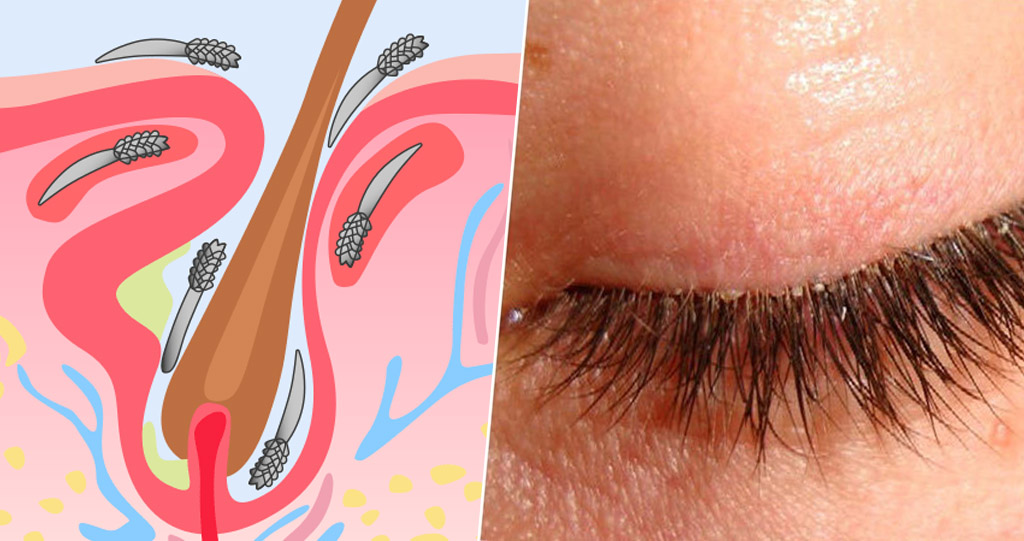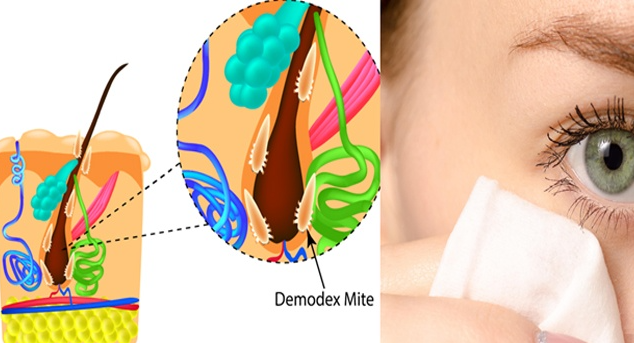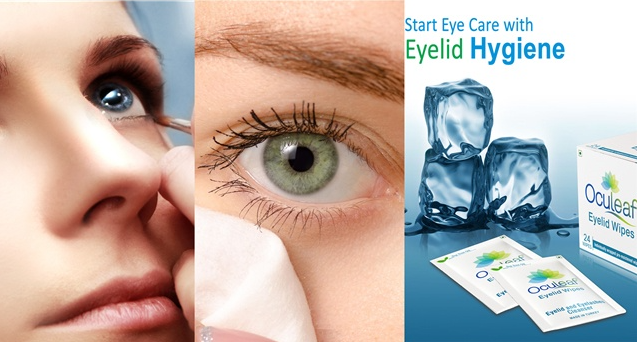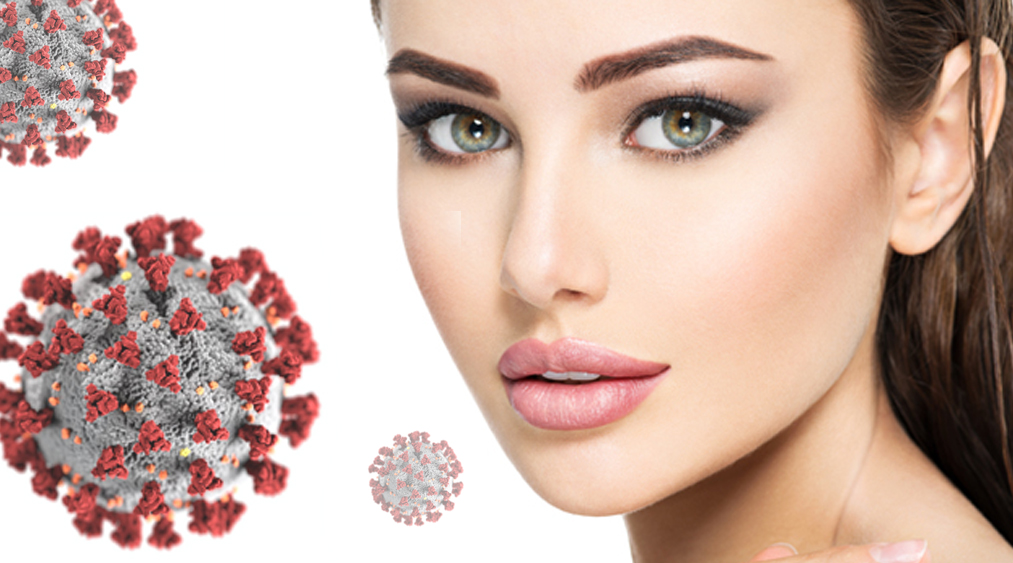
Role of Demodex in Ocular diseases
Demodex, better known as ‘eyelash mites’ inhabit hair follicles or the oil glands around the eyes. These mites cannot be seen with the naked eyes, even though you may peer hard at the mirror trying to find them. These microscopic mites belong to the arachnid family, that means they are a distant relation of the spider. They are quite common and most people have them. They cause many ocular diseases when they multiply, and their number gets out of control.
Where in your body do Demodex mites reside?
The two types of Demodex which affect humans are Demodex folliculorum, which live within hair follicles of eyelashes, and Demodex Brevis, which live in the sebaceous glands or oil glands in the skin surrounding the eyes. The Demodex, or ‘eyelash mites’ live in the hair follicles and oil glands, eat skin cells as well as the oil, and surface at night to look for mates.

Though the mites reside within your eyes, they don’t just stay confined to the eyes. Eyelash mites travel all over the face – forehead, base of the ears, cheeks, and the sides of the nose. The presence of mites on these areas can cause acne and rosacea flare-ups. So Demodex treatment has to cover the whole face and not just the infected eye area, to be fully cured of the infestation.
How do Demodex mites spread?
Person-person contact
These mites are transferred via skin contact or through person-person contact. The mites do not stay only on the eyes, but move all over the face. So when someone with Demodex hugs and kisses another person, the mites pass to the other person due to the contact with facial skin.
It is not spread through pets
It’s a common myth that you can catch the mites from your cat or dog. Demodex mites are species-specific and cannot transfer between different species. So you can hug and cuddle your pet as much as you want without the fear of catching the mites from them. On the other hand, if you have been diagnosed with the dreadful eyelash mites, you can’t pass it on to your pets either.
Who is most prone to Demodex infestation?
According to studies, elderly people are most prone to Demodex infestation. 25% of people in their twenties and 50% of people aged 50 also have the eyelash mites. With age, the chance of getting the mites increases, as over 80% of people aged 60 and above get this infestation. Usually, these mites do not cause any symptoms, so their presence goes undetected, and doctors believe the statistics are much below the actual numbers.
What are the ocular diseases caused by Demodex mites?
Demodex is the cause of many ocular diseases/conditions, such as
- Conjunctivitis
- Blepharitis
- Chalazia
- Keratitis
- Recurrent trichiasis
- Dry eye disease
- Madarosis (a condition in which eyelashes fall out)
- Rosacea
The scratching of the eyelids by the mites’ claws, consumption of skin cells, and the eyes’ reaction to the exoskeleton proteins can lead to an inflammatory response by the immune system. This causes the following symptoms:
- Swelling of the eyes
- Redness, soreness, itching and warmth in the eyelid
Daily eye hygiene using eyelash wipes like Oculeaf wipes can control or prevent Demodex infestation. If you have any of the symptoms above, you should check with an eye doctor to see whether you have an ‘eyelash mite’ infestation. If untreated, Demodex infestation can cause serious diseases which can lead to permanent eye damage.
Treatment of Demodex mites
Demodex or eyelash mites burrow into the eye hair follicles and glands, within which they eat and sleep. They lay their eggs within the eyes’ burrows, and the lifespan of these mites (eggs to the adult stage) is approximately a month. According to studies, tea tree oil is the best treatment for Demodex mites.
Oculeaf Eyelid Wipes, which are formulated with 7% Tea Tree Oil along with some other natural moisturizers, lubricating agent and skin conditioners, are now available in India. They not only improve the hygiene of eyes but also help in strengthening the health of the skin around eyes and improve overall comfort.
You are not required to rinse your eyes with water after using Ocular Eyelid Wipes as they provide NO-RINSE solutions for your eye care.
Tip: Before using Oculeaf Eyelid Wipes, wash your hands. Take out one pre-moistened wipe. Close your eye and wipe the upper eyelid from the eye corner near the nose to the other corner. Next, wipe the lower eyelid in a similar manner. Then, wipe the eyebrow. Repeat the same for the other eye. Use the wipe very gently while cleaning the eye contour area as the skin around eyes is very soft. DO NOT RINSE your eyes after using the eyelid wipe.




